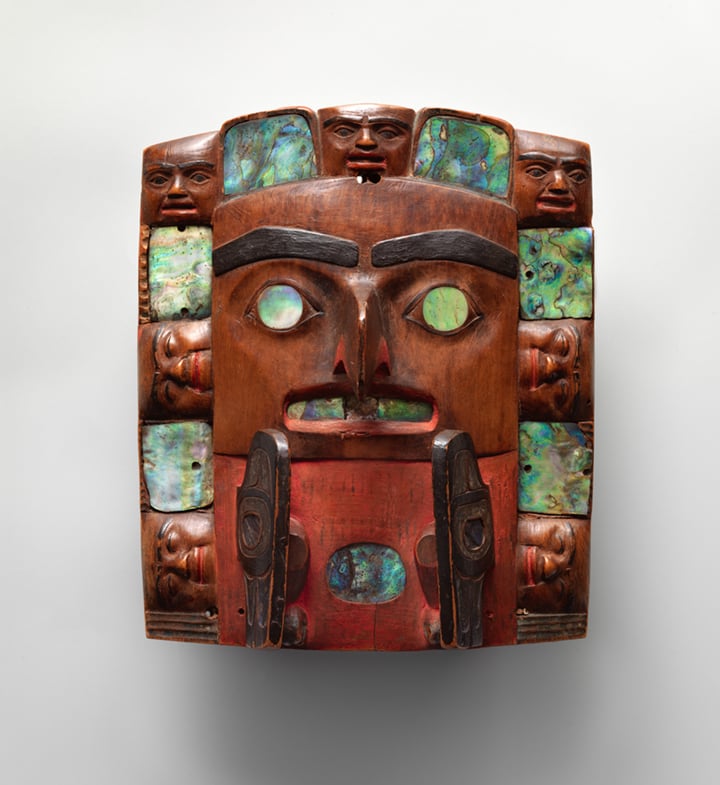
A recent investigative report reveals questions surrounding the provenance of Native American works gifted to the Metropolitan Museum of Art by prominent donors Charles and Valerie Diker.
The report, published last week in ProPublica, points out that just 15 percent of the 139 works donated or loaned by the Dikers have “solid or complete ownership histories.” Within the museum’s records, numerous objects have vague ownership details; some don’t have provenance information at all.
Experts suggest that the absence of these details could mean that pieces in the Diker collection are stolen or fake.
In 2017, the Dikers, who are among the most prominent collectors of Native American and Indigenous art in North America, gifted 91 objects to the Met. The works ranged in date from the 2nd to the early 20th century, and joined 20 other pieces donated by the couple since 1993. Since then, 77 of those pieces have joined the museum’s collection, while others have been returned after conversations with Tribal consultants, scholars, and source community members, according to a Met spokesperson.
At the time of the 2017 donation, a press release from the Met called the Dikers’ collection “the finest and most comprehensive private collection of its kind.” Per the wishes of Charles Diker, an honorary trustee at the institution since 2018, the gifted objects were presented in the museum’s American wing rather than its Art of Africa, Oceania, and the Americas department, as was the practice until that point.
“Our collecting practice for over 50 years has always centered on proceeding carefully, assessing all available information relating to provenance before acquiring a work, and welcoming new information should it come to light,” the Dikers told ProPublica in a statement.
Valerie and Charles Diker attend the American Federation of Arts 2017 Gala and Cultural Leadership Awards at The Metropolitan Club on October 26, 2017 in New York City. Photo: Sylvain Gaboury/Patrick McMullan via Getty Images.
The majority of works from the couple’s donations, including paintings, textiles, and ceramics, are on view now in a dedicated exhibition at the museum called “Art of Native America: The Charles and Valerie Diker Collection.” When the show opened in June of last year, it was accompanied by a statement from the museum that vowed to maintain “ongoing relationships with contemporary Native American and Indigenous artists.”
“We understand that these items—vibrant expressions of Native sovereignty, identity, and connections to community and family—embody intergenerational and environmental knowledge, including origin stories, languages, songs, dances, and ties to homelands,” the statement went on.
“We commit to pursuing continuous collaborations with Indigenous communities and to presenting Native American art in a manner that is inclusive of Indigenous perspectives, involves guidance from source communities, and creates space for respectful listening and thoughtful dialogue.”
Still, the show has drawn criticisms from members of tribes with ancestral ties to the material on display. Some have called out the institution for presenting ceremonial or funerary objects in an artistic context; others, like Shannon O’Loughlin, the executive director of the Association on American Indian Affairs, have claimed the museum “did not consult with affiliated tribal representatives” before mounting the show.
ProPublica came to a similar conclusion. For years, the Met has “failed to consult the necessary tribal officials in a timely and consistent manner about objects in its collections,” the report said.
If true, the Met is in violation of the 1990 Native American Graves Protection and Repatriation Act (NAGPRA), which requires federally funded institutions to consult tribes and lineal descendants when they acquire human remains, funerary objects, and other cultural items.
“For Native American collections, it is imperative to follow community protocols and guidance for the exhibition and care of items in the Museum,” the Met spokesperson said in a statement. “The exceptional works by Native American and Indigenous artists included in the Diker Collection have helped transform The Met’s conventional narratives of American art and culture, and encouraged more inclusion and celebration of creative expressions from communities whose voices and artistic practices have long been marginalized and ignored.”
The representative said that the institution’s “goal is to continue to work collaboratively and in support of Native American and Indigenous communities, while foregrounding their perspectives relevant to the collections currently in our care. We are proud of the progress we have made, and we recognize there is still much work to do.”